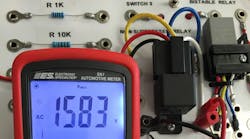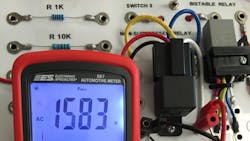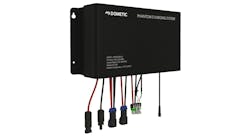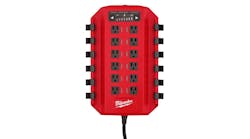Have there been instances where you or a technician may have removed or replaced a relay, only to find the relay sides were bulged out and the plastic sides were at times melted?
This bulging can happen when the coil has to be energized continuously. This process allows the temperature to rise in the relay and in the computer controlling the relay current — either the engine control unit (ECU) or other control units. For example, the computer controls multiple conventional relays that require continuous current to the coil in order for the relay to stay active. With a bistable relay, however, once the relay is set (contacts closed) the current is removed from the coil and the relay stays in the set position.
Most technicians have a drawer filled with all kinds and types of relays used for testing. When it comes to bistable relays, replacing a bistable relay with a conventional relay, or vice versa, could wreak havoc and cause expensive damage to your vehicles and fleets.
Some background
It is first important to understand that there is a difference between suppressed and non-suppressed relays. The most popular versions of suppressed relays are either diode-suppressed or resistor-suppressed – with either a diode or a resistor, respectively, built in – to help suppress voltage spikes (See Fig. 1).
(Read the March 2018 Training column: It’s not okay to just swap relays.)
Technicians should always bench test every relay, including suppressed relays. Technicians can test if a relay is suppressed by using a digital multimeter (DMM) with the ability to capture a fast-enough sample rate, in order to capture the high voltage created when the coil in a relay is turned off (See Fig. 2).
Fig. 2: In the training provided by K&D Technical Innovations, there is a test that technicians can do using a multimeter with a fast-enough sample rate to capture the high voltage created when the coil in a relay is turned off.Image courtesy of K&D Technical Innovations
Some of the more expensive DMMs are not fast enough to capture this. In order to complete this test, you will also need a meter with a “Peak Min/Max” function or a “REC” function.
Think about what this voltage could be doing to your systems. Even using the correct suppressed relay does not provide guarantee protection; the circuit of the suppressed relay could open or, even worse, short.
It is extremely important to test, replace, and/or use the correct relay for the correct application. Do not let anyone tell you that if the relay fits in the same cavity, it will work – even when you just need to test a known good relay to see if the system works. The consequences could mean having high voltage introduced into the circuit.
If you are replacing or testing a relay, be sure to use the schematic on the outside of the relay to confirm that you have the right relay going into the correct cavity (See Fig. 3).
The differences
Bistable relays use much less current, or amperage, which in turn create less heat and allow the vehicle’s computer (the engine control module, or ECM) to operate at a cooler temperature.
Bistable relays retain their switched position even if supply current to the coil fails. This means bistable relays can prevent the loss of information on the current switching status.
In addition, with a bistable relay, the vehicle’s computer grounds the circuit to engage the relay. Once the coil is not energized, the relay is still doing its job and stays connected even when the contact point is closed. In order to reset the relay to an open position, the current is reversed by the control circuit which causes the contacts to open.
But what happens if there is no signal to open the relay? It could become a parasitic drain.
It is important to note that bistable relays use less current on the coil side of the relay. This allows for multiple relays to be activated and controlled by a single circuit. This also puts less strain on the alternator and charging systems of the vehicle.
The consequences
Imagine what would happen if a conventional relay was accidentally replaced with a bistable relay. If this occurs, grounding the conventional relay would close the contacts and the technician would not be able to open the circuit. The relay would stay engaged, and this could create a parasitic drain on the circuit.
Let’s reverse the scenario by replacing a bistable relay with a conventional relay. The conventional relay would close the contact points and complete the circuit, but the moment the computer removed the ground from the relay the circuit would open.
Through this scenario, we are not even considering if the replaced conventional relay is suppressed or not. If a bistable relay was replaced by a non-suppressed conventional relay that could cause damage to the circuit, and continual damage to components until someone realizes the wrong relay was installed.
K&D Technical Innovations (kdtechnicalinnovations.com) is a service provider offering training solutions for industry and education. Owner Keith Littleton specializes in CAN communication issues and lab scope diagnostics and is the current station chair for TMC SuperTech’s electrical test station. Littleton holds numerous ASE certifications, as well as nine Toyota certifications and 11 GM certifications.
George Arrants is the training consultant for K&D Technical Innovations. As an automotive education consultant specializing in ASE Program Accreditation, Arrants works with instructors and administrators to develop partnerships with local business and industry through program advisory committees. He is past chair of the Technology and Maintenance Council’s TMCSuperTech – the National Technician Skills Competition – and the TMCFutureTech – the National Student Technician Competition. His entire career has been in the automotive service and education industries. He works with the ASE Education Foundation as the Medium/Heavy Truck Alliance manager.







